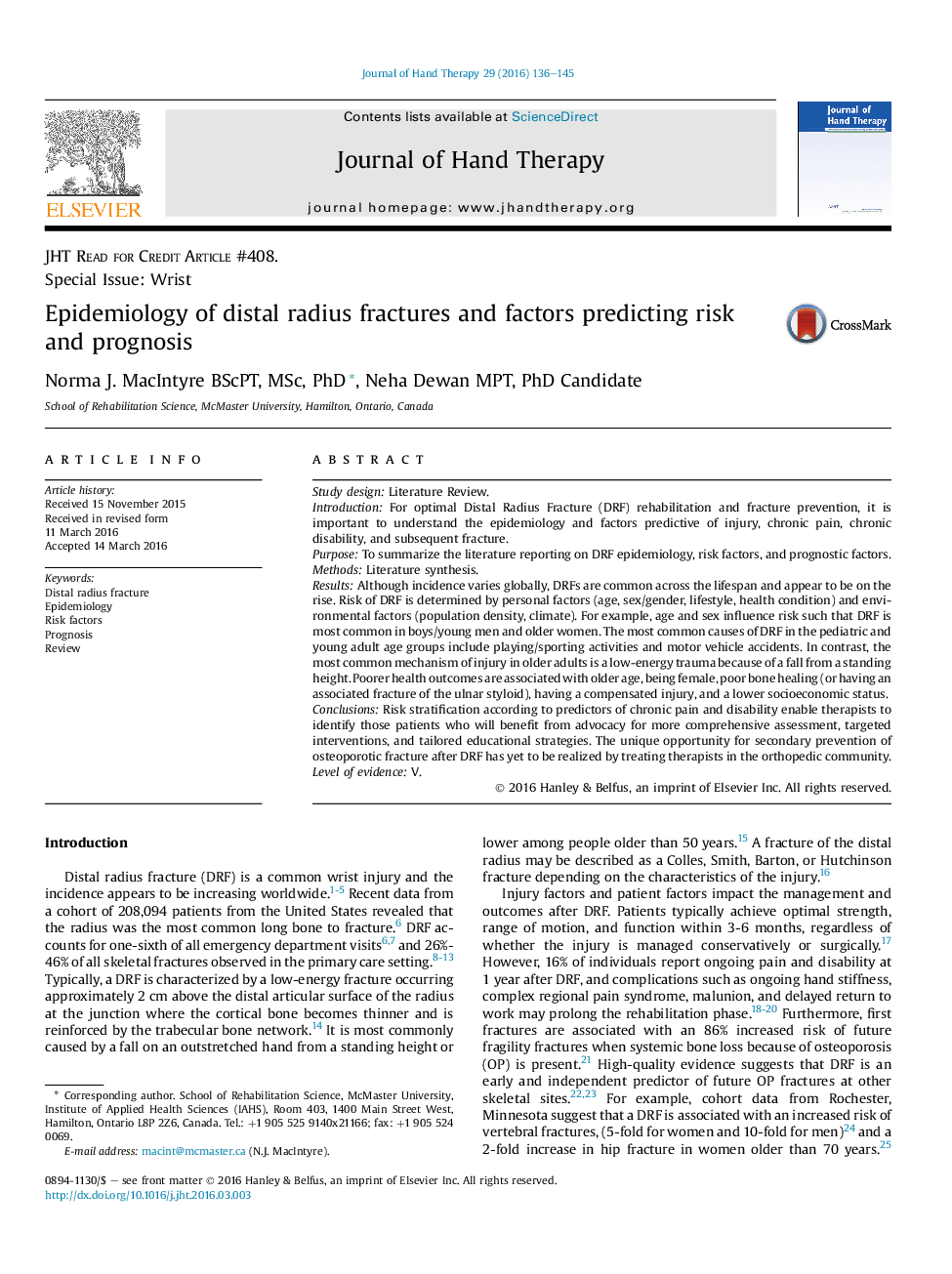| Article ID | Journal | Published Year | Pages | File Type |
|---|---|---|---|---|
| 2690960 | Journal of Hand Therapy | 2016 | 10 Pages |
Study designLiterature Review.IntroductionFor optimal Distal Radius Fracture (DRF) rehabilitation and fracture prevention, it is important to understand the epidemiology and factors predictive of injury, chronic pain, chronic disability, and subsequent fracture.PurposeTo summarize the literature reporting on DRF epidemiology, risk factors, and prognostic factors.MethodsLiterature synthesis.ResultsAlthough incidence varies globally, DRFs are common across the lifespan and appear to be on the rise. Risk of DRF is determined by personal factors (age, sex/gender, lifestyle, health condition) and environmental factors (population density, climate). For example, age and sex influence risk such that DRF is most common in boys/young men and older women. The most common causes of DRF in the pediatric and young adult age groups include playing/sporting activities and motor vehicle accidents. In contrast, the most common mechanism of injury in older adults is a low-energy trauma because of a fall from a standing height. Poorer health outcomes are associated with older age, being female, poor bone healing (or having an associated fracture of the ulnar styloid), having a compensated injury, and a lower socioeconomic status.ConclusionsRisk stratification according to predictors of chronic pain and disability enable therapists to identify those patients who will benefit from advocacy for more comprehensive assessment, targeted interventions, and tailored educational strategies. The unique opportunity for secondary prevention of osteoporotic fracture after DRF has yet to be realized by treating therapists in the orthopedic community.Level of evidenceV.
